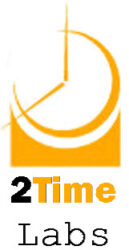 As I mentioned in the prior post, I have just finished reading Sam Carpenter’s book — Work the System.
As I mentioned in the prior post, I have just finished reading Sam Carpenter’s book — Work the System.
I am a bit in awe of what he’s written, and the fact that he’s written it as a business-owner, rather than a management theorist.
What has really got me excited, however, is that he perfectly echoes, in general terms, the essence of the 2Time approach.
It’s a bit uncanny, really, but if you are a reader of this blog, I invite you to draw your own conclusions about the general principles he has derived, and the ones I describe here on the blog.
He says, for example:
Here is the system-improvement concept in a nutshell: For a given primary system, in order to ensure that the desired result occurs over and over again, the task is to adjust that primary system’s subsystems so the correct components are being used and they are sequenced properly.
In essence, this is the 2Time approach to Time Management stated a bit differently. I discovered, to my astonishment, that I have basically followed the same steps he lays out in the book:
1. define the systems and subsystems (i.e. time management and it’s 11 inescapable fundamentals)
2. examine the subsystems, and analyze their components one by one, looking for opportunities for improvement(i.e. focus on building new habits one at a time)
3. make the system improvements, moving each system to peak efficiency. Document the new procedures (i.e. in the system of Belts moving from white to green.)
Anyone who is familiar with Michael Gerber’s book, The eMyth, will recognize that his ground-breaking book says very similar things from a slightly different perspective, and without contradiction.
Carpenter spends a great deal of time in the book sharing his own experience of trying to manage a company using the “Whack a Mole” approach to fighting fires on a daily basis. It was debilitating, addictive and ultimately un-sustainable until he had a moment of satori – enlightenment – and saw that his business was one large system that was being poorly managed. The way to escape the rat race that was killing him was to work on the subsystems.
He argues against the kind of wishy-washy thinking that the focus away from solid, tangible mechanics, and urges company-owners to look for the tangible processes that are falling apart in front of their eyes, while they have been chasing after the fallout.
The problem with a lack of systems thinking is that when bad things happen, we chase after the results to try to correct them, without being able to see the causes correctly.
In a way, this is what people struggle with in their time management, also.
There is stress in their lives, broken promises and forgotten commitments, and they don’t know why. They place the problem in the wrong mental category, thinking it has something to do with the kids, their own tendency to procrastinate, their ethnicity, the demands of their job, their need for a vacation, etc.
When the factor that they think is the cause changes either by luck or design, they are stunned to find out that peace of mind doesn’t come as they thought it should.
All that’s happened is that they don’t understand how time management systems work… how they ALL work, and that there’s certain inescapable, common design that they must follow in order to function.
Carpenter says virtually the same thing about companies, but he doesn’t go as far as Gerber or I do in suggesting what the subsystems are.
Not a problem, because the book is a compelling autobiography that makes it seem easy to make the journey he has made. He encourages business-owners to figure out their own sub-systems, launch their own improvement programs, come up with their own foundation documents and develop their own language to keep it all together.
At the most, this book is a brilliant business-book that every business owner should read, right before Gerber’s.
At the very least, it has helped me to see my own learning curve, from my degrees in operations research, through Peter Senge, via Michael Gerber and to this point where he echoes the underlying logic of 2Time.
What is clear is that he is elevating systems thinking and acting to a discipline in and of itself, and this is one of the book’s major contributions. He has made a powerful addition to the work Peter Senge did in the 1990’s to bring “systems thinking”to the fore in his book The Fifth Discipline.
I recommend it wholeheartedly. Download Work the System here.






